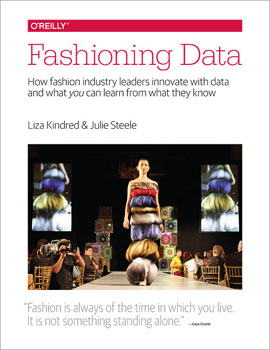"data applications" entries

Jai Ranganathan on architecting big data applications in the cloud
The O’Reilly Data Show podcast: The Hadoop ecosystem, the recent surge in interest in all things real time, and developments in hardware.
Subscribe to the O’Reilly Data Show Podcast to explore the opportunities and techniques driving big data and data science.
Given the quick pace of innovation in the data ecosystem, we like to take a step back from the details of individual components, architecture, and applications, in order to take a wider view of the landscape of big data. This allows us to evaluate the progress of technology and infrastructure along the way, shifting our attention from the details of individual components like Spark and Kafka, to larger trends.
Some of the larger trends we’ve been exploring include the capabilities of distributed machine learning and the tradeoffs and design decisions involved in cloud architecture and stream processing.
In this episode of the O’Reilly Data Show, I sat down with Jai Ranganathan, senior director of product management at Cloudera. We talked about the trends in the Hadoop ecosystem, cloud computing, the recent surge in interest in all things real time, and hardware trends:
Large-scale machine learning
This sounds a bit like this should already exist in really good form right now, but one of the things that I’m really interested in is expanding the set of capabilities for distributed machine learning. While there are systems out there today that do do this, I think relative to what you can experience from a singular environment learning scikit-learn or R, the set of things you can do in a distributed fashion is limited. … It’s not easy to distribute various algorithms and model-building techniques. I think there is still a lot of work for us to do to improve that experience. … And I do want to have good open source options like MLlib. MLlib may be the right answer. I would be perfectly happy if that’s the final answer, but we do need systems just to provide the kind of depth that you typically are used to in the singular environment. That’s just a matter of time and investment because these are non-trivial problems, but they are things that people are working on.

Building systems for massive scale data applications
The O’Reilly Data Show podcast: Tyler Akidau on the evolution of systems for bounded and unbounded data processing.
Subscribe to the O’Reilly Data Show Podcast to explore the opportunities and techniques driving big data and data science.
Many of the open source systems and projects we’ve come to love — including Hadoop and HBase — were inspired by systems used internally within Google. These systems were described in papers and implemented by people who needed frameworks that could comfortably scale to massive data sets.
Google engineers and scientists continue to publish interesting papers, and these days some of the big data systems they describe in publications are available on their cloud platform.
In this episode of the O’Reilly Data Show, I sat down with Tyler Akidau one of the lead engineers in Google’s streaming and Dataflow technologies. He recently wrote an extremely popular article that provided a framework for how to think about bounded and unbounded data processing (a follow-up article is due out soon). We talked about the evolution of stream processing, the challenges of building systems that scale to massive data sets, and the recent surge in interest in all things real time:
On the need for MillWheel: A new stream processing engine
At the time [that MillWheel was built], there was, as far as I know, literally nothing externally that could handle the scale that we needed to handle. A lot of the existing streaming systems didn’t focus on out-of-order processing, which was a big deal for us internally. Also we really wanted to hit a strong focus on consistency — being able to get absolutely correct answers. … All three of these things were lacking in at least some area in [the systems we examined].

Showcasing the real-time processing revival
Tools and learning resources for building intelligent, real-time products.

Register for Strata + Hadoop World NYC, which will take place September 29 to Oct 1, 2015.
A few months ago, I noted the resurgence in interest in large-scale stream-processing tools and real-time applications. Interest remains strong, and if anything, I’ve noticed growth in the number of companies wanting to understand how they can leverage the growing number of tools and learning resources to build intelligent, real-time products.
This is something we’ve observed using many metrics, including product sales, the number of submissions to our conferences, and the traffic to Radar and newsletter articles.
As we looked at putting together the program for Strata + Hadoop World NYC, we were excited to see a large number of compelling proposals on these topics. To that end, I’m pleased to highlight a strong collection of sessions on real-time processing and applications coming up at the event. Read more…

What the data world can learn from the fashion industry
How generating conversations can become one of the most important data assets for any organization.
 At O’Reilly Research, we focus our attention on trends in technology adoption — which tools are adopted and in which industries. In doing so, we uncover interesting cross-disciplinary opportunities and discover what we can learn from innovations in other fields.
At O’Reilly Research, we focus our attention on trends in technology adoption — which tools are adopted and in which industries. In doing so, we uncover interesting cross-disciplinary opportunities and discover what we can learn from innovations in other fields.
We’ve recently learned about the increasing role of data in the fashion industry, so we set out to uncover some of the players who are making disruptive changes using technology and analytics.
Our team asked Liza Kindred, founder of Third Wave Fashion, and Julie Steele, coauthor of Beautiful Visualization and Designing Data Visualizations, to take a closer look at these developments in their new report, “Fashioning Data: How fashion industry leaders innovate with data and what you can learn from what they know.” We think you’ll find some surprising applications of data and analytics in the fashion industry — applications that are useful regardless of the industry or organization you work within. And, we know we’re just at the beginning of what is likely a growing trend. Read more…

